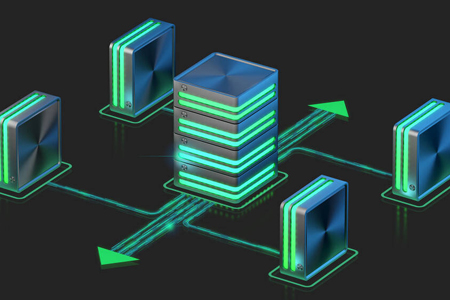OpenStack is a cloud operation system that controls large -scale computing, storage and network resource pools in the entire data center. These components are managed through a unique instrument panel, which provides the administrator with complete control, and at the same time authorize end users to allocate resources through the web interface. We can also say that it is a set of open source software to perform certain functions, such as dynamically creating virtual machines. The OpenStack cloud operation system was actually established in July 2010. Its goal is to provide open source software so that any organization can create and provide cloud computing services running on standard hardware.
OpenStack cloud operation system component
OpenStack is a collection of many different mobile components because it is an open source cloud computing software. Anyone can add additional components to the OpenStack cloud operation system to optimize their cloud infrastructure based on OpenStack and meet their needs. However, the OpenStack community has identified some key components. They are part of the core of OpenStack. They are distributed as components of any OpenStack system and are officially maintained by the OpenStack community.
1) Nova
Nova is the main computing engine behind the OpenStack cloud operation system. This component allows end users to use machine images to create and manage a large number of virtual servers. It is cloud's brain. OpenStack cloud operation system calculates configuration and manages large virtual machine networks.
2) SWIFT
Swift is an object and file storage system. It covers the traditional method of files through the position of the file on the disk drive. The user can change to the unique identifier of the reference file, and let the OpenStack cloud operating system decide to store the location of this information. This component is based on HTTP -based API storage and retrieval of non -structured data objects. This makes it easier to expand, because users don't have to worry about the capacity of a single system behind the software. Due to its data replication and horizontal expansion architecture, the component can ensure that the data is backup when the machine or network connection fails.
3) Neutron
A network component of OpenStack helps to ensure that each component deployed by the OpenStack cloud operation system can quickly and effectively communicate with each other. It is an insertable, scalable, and API -driven system for managing the network and providing network functions for OpenStack.
4) Horizon
This component provides a web -based portal or an interface to interact with all the underlying OpenStack services. It is the only graphical interface of OpenStack. It is a instrument panel that helps the system administrator to view what happened in the cloud and manage it as needed.
5) Cinder
A block storage component provides a long -lasting block storage for the running cloud examples or servers. Cinder's flexible architecture makes the task of creating and managing block storage equipment easier.

6) Keystone
The component provides the central directory of users who map to users of the OpenStack service, where all users of the OpenStack cloud are mapped to all the services provided by the cloud they use. It is used to provide authentication and authorization services for other OpenStack cloud operation system services.
7) Ceilometer
This component monitor the use of the cloud service of each user and perform the billing tasks accordingly. It retains the verified count of the system usage of each user's component of the OpenStack cloud.
8) GLANCE
This component storage and retrieval of virtual machine disk image. Glance allows these images as operating system templates when deploying new virtual machine instances.
9) Orchestration Heat
The arrangement component of the OpenStack cloud operation system helps to manage the infrastructure required to run the cloud service. This component is managed by the OpenStack native REST API and the cloudFormation inquiry API to manage multiple cloud applications. It allows users to store the requirements of cloud applications in a file, which defines the resources required by the specific application.
10) TROVE
The database of the OpenStack cloud operation system is the service component. It allows users to quickly and easily use the functions of the database of the relationship without processing complex management tasks, such as deployment, configuration, repair, backup, recovery, and monitoring.

 EN
EN
 CN
CN








